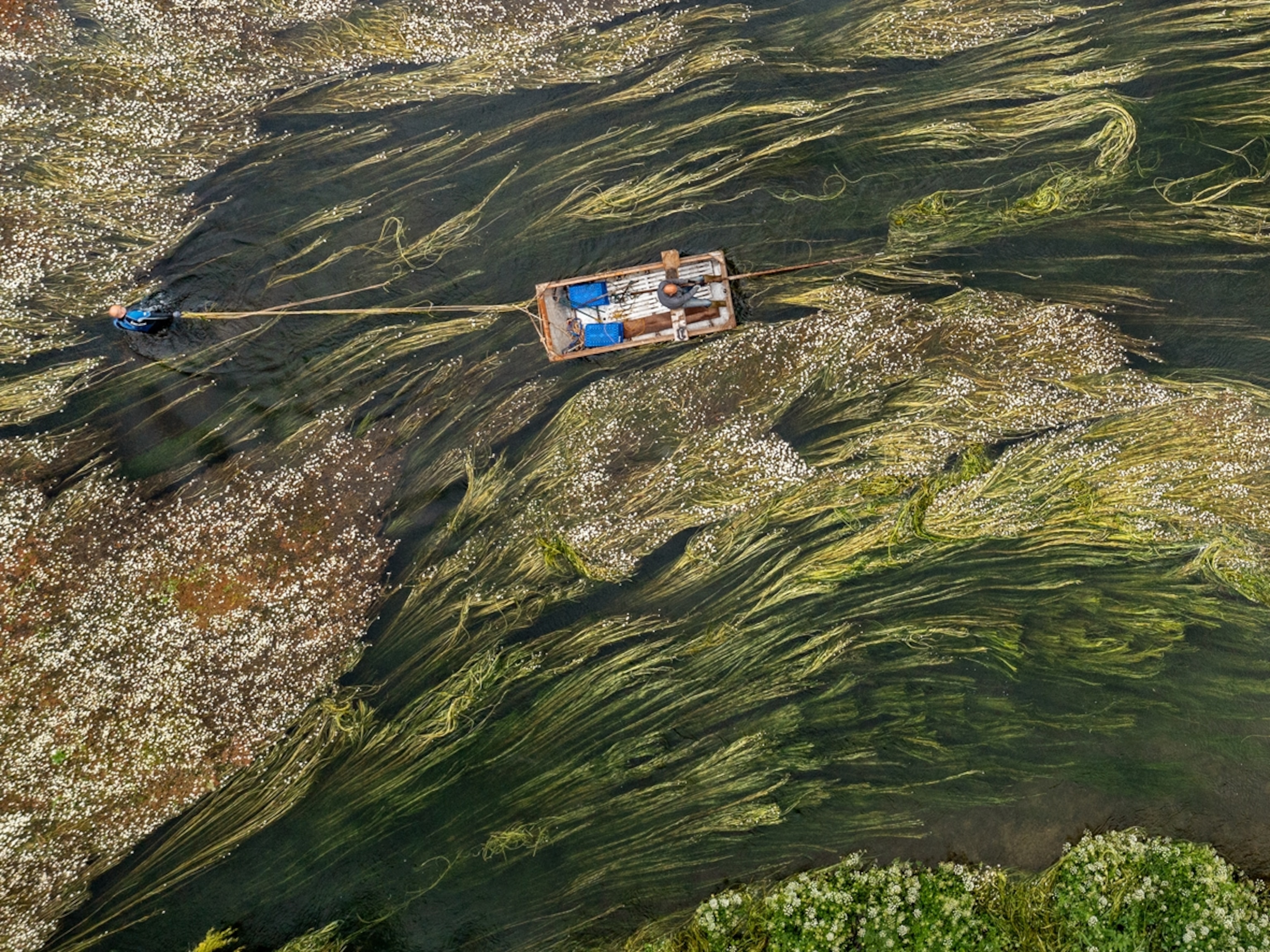See Human Impact in an X-Ray of the Ocean
Researchers were shocked to find two-thirds of the ocean show man-made strain.
The map above is essentially an x-ray of the ocean, and the colors show where it’s feeling the most impact from human activity. The darker the area, the more stressed the waters are by fishing, shipping, the destabilizing effects of climate change, or all three.
Such a map is rare. The vastness and depth of the ocean make it notoriously difficult to study. But in 2008 a team of researchers used satellite images and modeling software to make a complete portrait of human effects on the ocean. Five years later they did it again, capturing a comprehensive view of an ocean in transition. Among the revelations: Two-thirds of the ocean shows increased strain from human-related factors, such as fishing and climate change. And more than three-quarters of coastal waters suffer from climate change and increases in the effects of harmful land-based activities, including pollution. In all, the researchers classified more than 40 percent of the ocean as “heavily impacted” by human activity.
A booming population is chiefly to blame, says biologist Ben Halpern, head of the team that collected the data. Most of the dark areas are in the Northern Hemisphere, where almost 90 percent of humans live. But population alone doesn’t affect marine life. “A lot of the ocean is getting worse, and climate change in particular is driving a lot of those changes,” says Halpern.
Still, the story isn’t all bad. Some seas have seen reduced human impact—in parts of the North Atlantic, for example, where there are more fuel-efficient ships and new regulations. In 2016 countries established more than 40 new sites to create more than 1.4 million additional square miles of protected marine areas, shielding much of it from commercial fishing, energy drilling, and other activities that might otherwise do harm.




